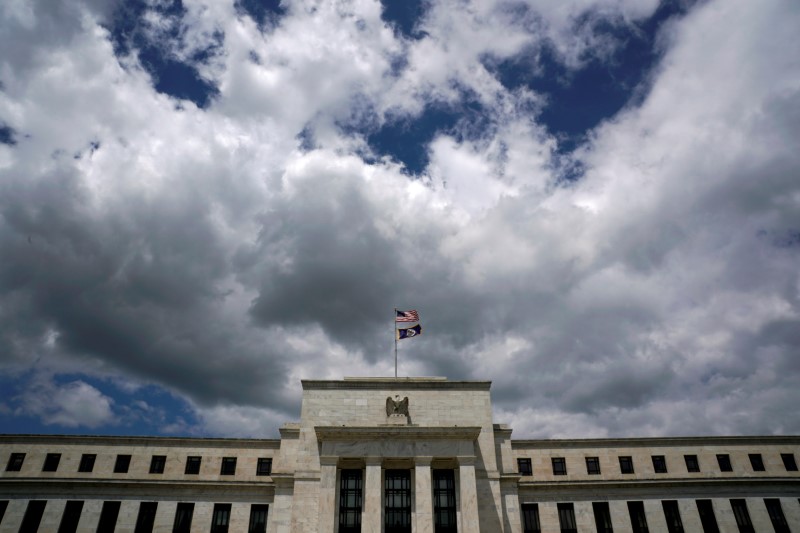 © Reuters. Clouds over the Federal Reserve in Washington
© Reuters. Clouds over the Federal Reserve in WashingtonWASHINGTON (Reuters) – A government report that showed a hefty 313,000 U.S. jobs created last month as sidelined workers rejoined the labor force while wage pressures remained muted could help dispel any views at the Federal Reserve that the United States is running dry on workers.
It was a report that, for now, pushed aside concerns about a possible spike in earnings and the inflation that could come about as a result, and pointed instead to an economy that was, increasingly, allowing people at the margins to find employment.
“This is consistent with the view that there are still many workers who are outside the workforce, but will return in response to a strong labor market,” wrote Dean Baker, a senior economist at the Center for Economic and Policy Research.
While the report adds certainty to the Fed’s expected rate hike this month, it is also likely to increase support at the central bank for keeping further rate increases at a gradual pace to let the jobs market healing continue.
It also boosted claims by the Trump administration that its moves on taxes, regulations, tariffs and other measures are paying off, at least for workers in the president’s core constituencies.
“We’re already seeing this working and we’re already seeing workers get the benefits of this,” Treasury Secretary Steven Mnuchin told CNBC on Friday.
Manufacturing added 31,000 jobs, with 4,000 new positions in primary metals manufacturing added even before the administration imposed new steel and aluminum tariffs to benefit the industry. Construction added 61,000 jobs.
Though seasonal impacts like a cold January and a virulent flu season may have played a role in last month’s bounceback, the February numbers were “remarkably strong,” said Jed Kolko, chief economist with job site Indeed.com.
“Blue-collar sectors drove these gains…Manufacturing is now outpacing the economy overall,” he said.
The overall unemployment rate remained at 4.1 percent, as the surge in jobs was offset by an 806,000 person jump in the labor force. That pushed the labor force participation rate up 0.3 percentage point, to 63 percent.
About 6.7 million people remained unemployed. But over the past year, the number of “discouraged workers” – those who want to work but have stopped looking for a job because they don’t believe they will find one – has fallen nearly 30 percent, to 373,000.
Baker noted that the rise in the participation rate was focused among prime age men from 25 to 54 years old, a group whose lagging labor force participation has been a major concern among social scientists, economists and politicians.
“The implication is that there is still considerable slack in the labor market and there is little reason for the Federal Reserve to rush.”
Wage growth is watched closely by the Fed as evidence of the labor market’s strength, and at 2.6 percent year over year remains “disappointing…It is still too soon to declare full employment,” said Elise Gould, a senior economist at the Economic Policy Institute.
Source: Investing.com




























